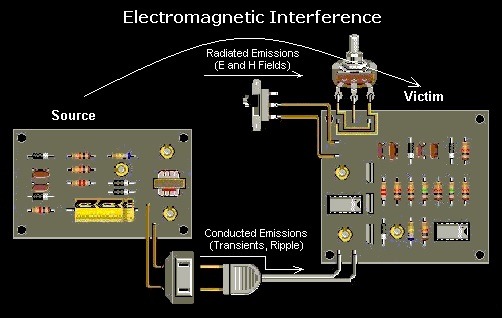
Electromagnetic interference (EMI) is an electromagnetic emission that causes a disturbance in another piece of electrical equipment. EMI can be attributed to a wide span of the electromagnetic spectrum including radio, DC and even microwave frequencies. Because anything that carries rapidly changing electrical currents gives off electromagnetic emissions, it is quite common for one object’s emissions to “interfere” with another’s. EMI compromises the performance of electrical equipment by obstructing and degrading data; sometimes even losing data completely.
EMI can be caused two ways. It can be caused by direct physical contact with a conductor, called conducted EMI, or by induction (without physical contact), called radiated EMI. While nearly every electrical device creates emissions that can cause EMI, (i.e. electric motors, Bluetooth devices, cellphones) electric power cords and high-speed cabling are the most common sources of radiated EMI.
In 1933 the International Electrotechnical Commission called for the organization of what was to become the International Special Committee on Radio Interference (CISPR). The CISPR was created to address emerging concerns over EMI. CISPR released many publications on the testing, measurement and recommended emission and immunity limits for EMI. Since CISPR’s initial work with managing EMI, many advances and changes have led to modern electromagnetic compatibility standards.
EMI regulations help keep the multitude of electronic devices functioning properly. Without these regulations our electronic devices would suffer a significant degradation of performance and data loss.
Some basic options for preventing EMI include:
*Keeping electronic devices away from heavy machinery, motors or generators.
*Using shielded cables.
*Using EMI filters
*Using a snubber network between two contacts under 2 A


Leave a Reply
You must be logged in to post a comment.